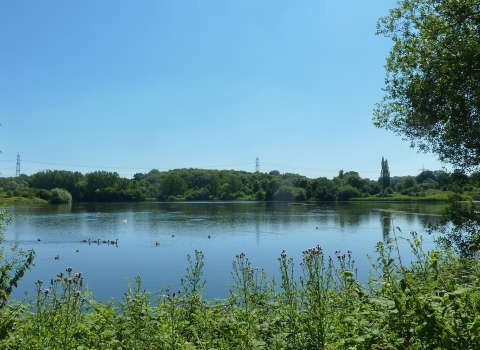
Jim Asher
Decoy Heath
Location
OS Map Reference
SU 613 634View on What3Words
Know before you go
Dogs
When to visit
Opening times
Open at all timesBest time to visit
All year roundAbout the reserve
Dragonflies galore
Decoy Heath is one of the best sites for dragonflies and damselflies in Berkshire. No fewer than 23 species have been known to breed around its shallow pools. They include the keeled skimmer, white-legged damselfly, emerald damselfly and the small red damselfly with its bright red legs. This scarlet species prefers shallow, unshaded streams and bog pools with overlaying bog-moss mats. By creating new pools, the Trust has significantly expanded the available habitat for these delightful insects.
Fascinating bogland
Insects are attracted to flowers at the margins of the pools. Lesser skullcap, bog pimpernel and marsh violet are three of the more uncommon flowers that favour these boggy conditions. Rushes and sedges provide cover for nesting moorhens.
Heathland rarity
An important population of adders is present on site and doing well, thanks to habitat management by the Trust to create special basking platforms and protect hibernacula. Adders are very vulnerable to disturbance so please don't lift the tins; instead go quietly and you may well come across one basking in the open.
Many uncommon mosses and liverworts inhabit the wet heath, while the drier areas favour grey and red lichens. Honeysuckle, foxglove and primrose can be found here. More than 80 species of birds have been recorded at Decoy Heath. Some years scarce ground-nesting birds including nightjar and woodlark make their homes here.



